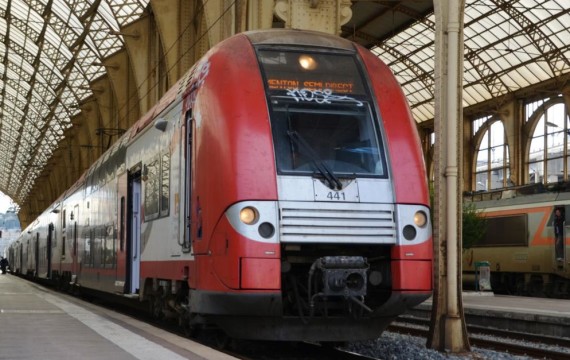Saft has signed an agreement with SNCF, the national railway operator in France, to provide nickel-based batteries for over 200 trains, which employ the Alstom Coradia Duplex electric multiple unit (EMU) platform. These trains can achieve 160 km/h and are used in regional routes in France. The Saft/SNCF contract has been valued at about €4 million.
Pierre-André Nutte, the Saft Sales Manager for Railways & Mobility in France answered some questions for CleanTechnica about the batteries.
1. What will adding Saft battery systems do to help these trains perform better?
Saft’s Alkalines batteries deliver superior reliability and availability. For instance, they are not subject to sudden death, so there is no service interruption. Saft batteries offer longer life (less battery replacement), high performances at low temperatures (no defect during train set-up in winter) and resistance to abuse (no replacement after deep discharge). Saft’s technology brings the highest level of safety for the train’s passengers.
2. Where on each train will they be installed?
Batteries are located inside a dedicated electrical cabinet in the train. Batteries are provided in sliding battery trays for easy access and maintenance. Saft designed these trays in order to fit in the existing electrical cabinet.
3. What is the size of each train’s battery system?
One battery is made of three battery trays. Each of the tray dimensions are approximately 450x700x550 mm (hxLxd).
4. How long does it take to install a battery system?
Saft batteries are delivered fully assembled in each battery tray; designed and qualified by Saft. When the former battery is removed, the installation is rather quick as it only requires screwing the tray onto the sliders, and then connecting the electrical cables. It takes approximately less than an hour on the end-user side.
5. What is the cost of each battery system?
While we cannot disclose specific customer information, Saft’s solution was economical for SNCF in terms of LCC/TCO. This is one of the reasons our customer replaced all existing batteries with Saft’s technology.
6. The Saft batteries are nickel-based…why is using this material better than using lead-acid which is what the trains use now?
The Saft Nickel-based batteries are, by design & construction, not subject to sudden death. They are working at very low temperature (no problem of train set-up in winter). They have lower weight, require less maintenance and have a higher reliability. This is essential to ensure the highest level of passenger safety.
7. What do these French trains carry, and about how many miles or kilometers does each train travel each year?
This is a regional train carrying passengers in many French regions: Nord-Pas-de-Calais, Lorraine, Pays de la Loire, Rhône-Alpes, Provence-Alpes-Côte d’Azur, Haute-Normandie, Centre Val de Loire, Picardie.
8. What will be the financial benefits of using the Saft batteries for the railway?
The LCC/TCO analysis of SNCF showed the profitability of using Saft’s batteries. In fact, Saft batteries offer longer life (less battery replacement), high reliability (no service interruption), high performances at low temperatures (no defect during train set-up in winter) and resistance to abuse (no replacement after deep discharge). All these features cut the operational costs of the train.
9. What will be the environmental benefits?
Saft’s nickel-based batteries have a longer life and lower weight than L/A batteries. It results in fewer replacements, less waste generated and therefore, the amount of resources consumed is minimized. A full life cycle analysis comparing L/A and Saft nickel-based batteries for on-board application, led by a reputable environmental consulting firm, concluded the environmental impacts of Saft’s solution were significantly lower than alternatives.
10. The MRX batteries have a service life of 15 years…how much maintenance is required and what is necessary to keep them in good condition?
Saft batteries require minimal maintenance. Typical water topping-up interval is 2 years. In addition, topping-up could be performed with Saft’s Water Filling System: one inlet and one outlet, to fill at the right level all the cells of the battery without any risk of missing one cell. The Saft automated water filling station makes this operation even easier and safer. Pushing the start button to run the topping-up, the station automatically stops when the battery is filled.
11. When they expire, can they be recycled?
Saft nickel-based batteries are recycled at the end of their long service life of 15 years in fully permitted recycling facilities located in America, the European Union and Asia. Over 75 percent of the weight of the used battery is reused in industry, either as raw material for the manufacturer of new nickel-based batteries, or alternatively in other industries such as stainless steel production.
Source: Cleantechnica



